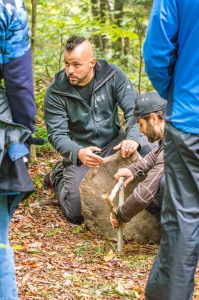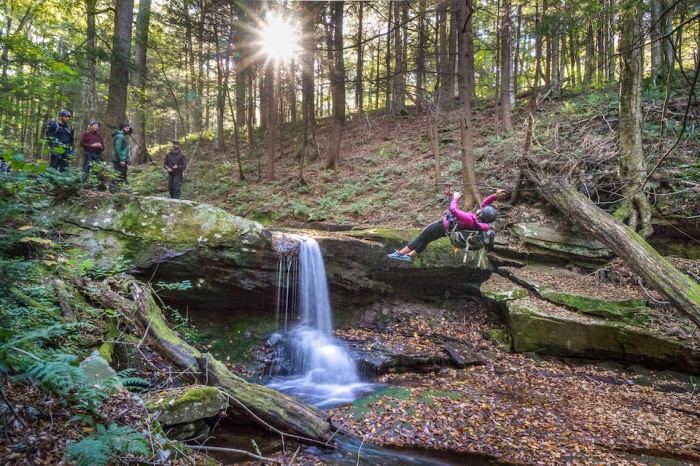The Bear Grylls Survival Academy teaches the necessary bushcraft skills to head deep into the woods and come out alive, from 24-hour beginner courses to extreme five-day experiences.

Bear Grylls built a career on survival. In his TV show, Running Wild, Grylls takes celebrities into the woods and tests their limits. He’s fed Zac Efron worms, rappelled off a cliff with Kate Winslet, and slept in a cave with Ben Stiller.
Thanks to the Bear Grylls Survival Academy, you too can learn firsthand what it’s like to live in the woods, Bear Grylls-style. Grylls himself didn’t attend this course, but his expert instructors did. Determined to improve my wilderness survival skills, I headed to the Catskills of New York for the 24-hour introductory course.
TV Fluff or Real World Skills?
I can hear naysayers complaining this isn’t hardcore enough, or that there’s nothing useful to be learned from a TV show host. And I hear you. In fact, I was skeptical myself. I find TV shows overblown and roll my eyes at the dramatization.
But even though this 24-hour course didn’t push me to a survivalist breaking point, I found it to be a quality experience taught by knowledgeable and talented staff.
Instructors Josh Valentine, Jake St. Pierre, and Chris Tyler, all from the U.S., bring decades of outdoor experience. They maintain an impressive resume of backcountry experience, extreme mountain guiding, first-aid training, rope rigging skills, and all manner of hunting, fishing, and trapping know-how.
While I was bummed I wouldn’t get to meet Grylls, I was excited to learn from such experienced teachers and Bear’s right-hand men. They eschew the camera but are involved in scouting show locations and prepping the celebrity survival experiences.
One Woman’s Outdoor Survival Experience

Circling up, we introduced ourselves. We were eight participants from all over the East Coast: a man from New Jersey interested in having outdoor skills to pass onto his daughter, a father and son from Florida chasing an educational bonding experience, an adventure photographer from Georgia, and a brother-father trio from D.C. who had long seen Bear on TV and were excited to try it out in real life.
Three Survival Lessons
1. Always Carry a Cotton Ball

2. Primitive Shelters Are Fun But Kind Of Creepy
3. It All Comes Down To Attitude
Bear Grylls Survival Academy Details
- Location: Catskills USA & Highlands UK
- Length: 24-Hour & 5-Day
- Price: $399 for the 24-Hour
- More Info / Book Now


 and practice skills. We nibbled on edible plants, identified berries, and set our direction by the sun.
and practice skills. We nibbled on edible plants, identified berries, and set our direction by the sun.










